- Home
- Richard Dawkins
The God Delusion Page 20
The God Delusion Read online
Page 20
Assuming that the Cambridge theologian was a mainstream Christian, he probably believed some combination of the following:
• In the time of the ancestors, a man was born to a virgin mother with no biological father being involved.
• The same fatherless man called out to a friend called Lazarus, who had been dead long enough to stink, and Lazarus promptly came back to life.
• The fatherless man himself came alive after being dead and buried three days.
• Forty days later, the fatherless man went up to the top of a hill and then disappeared bodily into the sky.
• If you murmur thoughts privately in your head, the fatherless man, and his 'father' (who is also himself) will hear your thoughts and may act upon them. He is simultaneously able to hear the thoughts of everybody else in the world.
• If you do something bad, or something good, the same fatherless man sees all, even if nobody else does. You may be rewarded or punished accordingly, including after your death.
• The fatherless man's virgin mother never died but 'ascended' bodily into heaven.
• Bread and wine, if blessed by a priest (who must have testicles), 'become' the body and blood of the fatherless man.
What would an objective anthropologist, coming fresh to this set of beliefs while on fieldwork in Cambridge, make of them?
PSYCHOLOGICALLY PRIMED FOR RELIGION
The idea of psychological by-products grows naturally out of the important and developing field of evolutionary psychology.80 Evolutionary psychologists suggest that, just as the eye is an evolved organ for seeing, and the wing an evolved organ for flying, so the brain is a collection of organs (or 'modules') for dealing with a set of specialist data-processing needs. There is a module for dealing with kinship, a module for dealing with reciprocal exchanges, a module for dealing with empathy, and so on. Religion can be seen as a by-product of the misfiring of several of these modules, for example the modules for forming theories of other minds, for forming coalitions, and for discriminating in favour of in-group members and against strangers. Any of these could serve as the human equivalent of the moths' celestial navigation, vulnerable to misfiring in the same kind of way as I suggested for childhood gullibility. The psychologist Paul Bloom, another advocate of the 'religion is a by-product' view, points out that children have a natural tendency towards a dualistic theory of mind. Religion, for him, is a by-product of such instinctive dualism. We humans, he suggests, and especially children, are natural born dualists.
A dualist acknowledges a fundamental distinction between matter and mind. A monist, by contrast, believes that mind is a manifestation of matter - material in a brain or perhaps a computer - and cannot exist apart from matter. A dualist believes the mind is some kind of disembodied spirit that inhabits the body and therefore conceivably could leave the body and exist somewhere else. Dualists readily interpret mental illness as 'possession by devils', those devils being spirits whose residence in the body is temporary, such that they might be 'cast out'. Dualists personify inanimate physical objects at the slightest opportunity, seeing spirits and demons even in waterfalls and clouds.
F. Anstey's 1882 novel Vice Versa makes sense to a dualist, but strictly should be incomprehensible to a dyed-in-the-wool monist like me. Mr Bultitude and his son mysteriously find that they have swapped bodies. The father, much to the son's glee, is obliged to go to school in the son's body; while the son, in the father's body, almost ruins the father's business through his immature decisions. A similar plotline was used by P. G. Wodehouse in Laughing Gas, where the Earl of Havershot and a child movie star go under the anaesthetic at the same moment in neighbouring dentist's chairs, and wake up in each other's bodies. Once again, the plot makes sense only to a dualist. There has to be something corresponding to Lord Havershot which is no part of his body, otherwise how could he wake up in the body of a child actor?
Like most scientists, I am not a dualist, but I am nevertheless easily capable of enjoying Vice Versa and Laughing Gas. Paul Bloom would say this is because, even though I have learned to be an intellectual monist, I am a human animal and therefore evolved as an instinctive dualist. The idea that there is a me perched somewhere behind my eyes and capable, at least in fiction, of migrating into somebody else's head, is deeply ingrained in me and in every other human being, whatever our intellectual pretensions to monism. Bloom supports his contention with experimental evidence that children are even more likely to be dualists than adults are, especially extremely young children. This suggests that a tendency to dualism is built into the brain and, according to Bloom, provides a natural predisposition to embrace religious ideas.
Bloom also suggests that we are innately predisposed to be creationists. Natural selection 'makes no intuitive sense'. Children are especially likely to assign purpose to everything, as the psychologist Deborah Keleman tells us in her article 'Are children "intuitive theists"?'81 Clouds are 'for raining'. Pointy rocks are 'so that animals could scratch on them when they get itchy'. The assignment of purpose to everything is called teleology. Children are native ideologists, and many never grow out of it.
Native dualism and native teleology predispose us, given the right conditions, to religion, just as my moths' light-compass reaction predisposed them to inadvertent 'suicide'. Our innate dualism prepares us to believe in a 'soul' which inhabits the body rather than being integrally part of the body. Such a disembodied spirit can easily be imagined to move on somewhere else after the death of the body. We can also easily imagine the existence of a deity as pure spirit, not an emergent property of complex matter but existing independently of matter. Even more obviously, childish teleology sets us up for religion. If everything has a purpose, whose purpose is it? God's, of course.
But what is the counterpart of the usefulness of the moths' light compass? Why might natural selection have favoured dualism and teleology in the brains of our ancestors and their children? So far, my account of the 'innate dualists' theory has simply posited that humans are natural born dualists and ideologists. But what would the Darwinian advantage be? Predicting the behaviour of entities in our world is important for our survival, and we would expect natural selection to have shaped our brains to do it efficiently and fast. Might dualism and teleology serve us in this capacity? We may understand this hypothesis better in the light of what the philosopher Daniel Dennett has called the intentional stance.
Dennett has offered a helpful three-way classification of the 'stances' that we adopt in trying to understand and hence predict the behaviour of entities such as animals, machines or each other.82 They are the physical stance, the design stance and the intentional stance. The physical stance always works in principle, because everything ultimately obeys the laws of physics. But working things out using the physical stance can be very slow. By the time we have sat down to calculate all the interactions of a complicated object's moving parts, our prediction of its behaviour will probably be too late. For an object that really is designed, like a washing machine or a crossbow, the design stance is an economical short cut. We can guess how the object will behave by going over the head of physics and appealing directly to design. As Dennett says,
Almost anyone can predict when an alarm clock will sound on the basis of the most casual inspection of its exterior. One does not know or care to know whether it is spring wound, battery driven, sunlight powered, made of brass wheels and jewel bearings or silicon chips - one just assumes that it is designed so that the alarm will sound when it is set to sound.
Living things are not designed, but Darwinian natural selection licenses a version of the design stance for them. We get a short cut to understanding the heart if we assume that it is 'designed' to pump blood. Karl von Frisch was led to investigate colour vision in bees (in the face of orthodox opinion that they were colour-blind) because he assumed that the bright colours of flowers were 'designed' to attract them. The quotation marks are designed to scare off mendacious creationists who might otherwise clai
m the great Austrian zoologist as one of their own. Needless to say, he was perfectly capable of translating the design stance into proper Darwinian terms.
The intentional stance is another short cut, and it goes one better than the design stance. An entity is assumed not merely to be designed for a purpose but to be, or contain, an agent with intentions that guide its actions. When you see a tiger, you had better not delay your prediction of its probable behaviour. Never mind the physics of its molecules, and never mind the design of its limbs, claws and teeth. That cat intends to eat you, and it will deploy its limbs, claws and teeth in flexible and resourceful ways to carry out its intention. The quickest way to second-guess its behaviour is to forget physics and physiology and cut to the intentional chase. Note that, just as the design stance works even for things that were not actually designed as well as things that were, so the intentional stance works for things that don't have deliberate conscious intentions as well as things that do.
It seems to me entirely plausible that the intentional stance has survival value as a brain mechanism that speeds up decision-making in dangerous circumstances, and in crucial social situations. It is less immediately clear that dualism is a necessary concomitant of the intentional stance. I shan't pursue the matter here, but I think a case could be developed that some kind of theory of other minds, which could fairly be described as dualistic, is likely to underlie the intentional stance - especially in complicated social situations, and even more especially where higher-order intentionality comes into play-Dennett speaks of third-order intentionality (the man believed that the woman knew he wanted her), fourth-order (the woman realized that the man believed that the woman knew he wanted her) and even fifth-order intentionality (the shaman guessed that the woman realized that the man believed that the woman knew he wanted her). Very high orders of intentionality are probably confined to fiction, as satirized in Michael Frayn's hilarious novel The Tin Men: 'Watching Nunopoulos, Rick knew that he was almost certain that Anna felt a passionate contempt for Fiddlingchild's failure to understand her feelings about Fiddlingchild, and she knew too that Nina knew she knew about Nunopoulos's knowledge . . .' But the fact that we can laugh at such contortions of other-mind inference in fiction is probably telling us something important about the way our minds have been naturally selected to work in the real world.
In its lower orders at least, the intentional stance, like the design stance, saves time that might be vital to survival. Consequently, natural selection shaped brains to deploy the intentional stance as a short cut. We are biologically programmed to impute intentions to entities whose behaviour matters to us. Once again, Paul Bloom quotes experimental evidence that children are especially likely to adopt the intentional stance. When small babies see an object apparently following another object (for example, on a computer screen), they assume that they are witnessing an active chase by an intentional agent, and they demonstrate the fact by registering surprise when the putative agent fails to pursue the chase.
The design stance and the intentional stance are useful brain mechanisms, important for speeding up the second-guessing of entities that really matter for survival, such as predators or potential mates. But, like other brain mechanisms, these stances can misfire. Children, and primitive peoples, impute intentions to the weather, to waves and currents, to falling rocks. All of us are prone to do the same thing with machines, especially when they let us down. Many will remember with affection the day Basil Fawlty's car broke down during his vital mission to save Gourmet Night from disaster. He gave it fair warning, counted to three, then got out of the car, seized a tree branch and thrashed it to within an inch of its life. Most of us have been there, at least momentarily, with a computer if not with a car. Justin Barrett coined the acronym HADD, for hyperactive agent detection device. We hyperactively detect agents where there are none, and this makes us suspect malice or benignity where, in fact, nature is only indifferent. I catch myself momentarily harbouring savage resentment against some blameless inanimate such as my bicycle chain. There was a poignant recent report of a man who tripped over his untied shoelace in the Fitzwilliam Museum in Cambridge, fell down the stairs, and smashed three priceless Qing Dynasty vases: 'He landed in the middle of the vases and they splintered into a million pieces. He was still sitting there stunned when staff appeared. Everyone stood around in silence, as if in shock. The man kept pointing to his shoelace, saying, "There it is; that's the culprit." '83
Other by-product explanations of religion have been proposed by Hinde, Shermer, Boyer, Atran, Bloom, Dennett, Keleman and others. One especially intriguing possibility mentioned by Dennett is that the irrationality of religion is a by-product of a particular built-in irrationality mechanism in the brain: our tendency, which presumably has genetic advantages, to fall in love.
The anthropologist Helen Fisher, in Why We Love, has beautifully expressed the insanity of romantic love, and how over-the-top it is compared with what might seem strictly necessary. Look at it this way. From the point of view of a man, say, it is unlikely that any one woman of his acquaintance is a hundred times more lovable than her nearest competitor, yet that is how he is likely to describe her when 'in love'. Rather than the fanatically monogamous devotion to which we are susceptible, some sort of 'polyamory' is on the face of it more rational. (Polyamory is the belief that one can simultaneously love several members of the opposite sex, just as one can love more than one wine, composer, book or sport.) We happily accept that we can love more than one child, parent, sibling, teacher, friend or pet. When you think of it like that, isn't the total exclusiveness that we expect of spousal love positively weird? Yet it is what we expect, and it is what we set out to achieve. There must be a reason.
Helen Fisher and others have shown that being in love is accompanied by unique brain states, including the presence of neurally active chemicals (in effect, natural drugs) that are highly specific and characteristic of the state. Evolutionary psychologists agree with her that the irrational coup de foudre could be a mechanism to ensure loyalty to one co-parent, lasting for long enough to rear a child together. From a Darwinian point of view it is, no doubt, important to choose a good partner, for all sorts of reasons. But, once having made a choice - even a poor one - and conceived a child, it is more important to stick with that one choice through thick and thin, at least until the child is weaned.
Could irrational religion be a by-product of the irrationality mechanisms that were originally built into the brain by selection for falling in love? Certainly, religious faith has something of the same character as falling in love (and both have many of the attributes of being high on an addictive drug*). The neuropsychiatrist John Smythies cautions that there are significant differences between the brain areas activated by the two kinds of mania. Nevertheless, he notes some similarities too:
* See my expose of the dangerous narcotic Gerin Oil: R. Dawkins, 'Gerin Oil', Free Inquiry 24: 1, 2003, 9-11.
One facet of the many faces of religion is intense love focused on one supernatural person, i.e. God, plus reverence for icons of that person. Human life is driven largely by our selfish genes and by the processes of reinforcement. Much positive reinforcement derives from religion: warm and comforting feelings of being loved and protected in a dangerous world, loss of fear of death, help from the hills in response to prayer in difficult times, etc. Likewise, romantic love for another real person (usually of the other sex) exhibits the same intense concentration on the other and related positive reinforcements. These feelings can be triggered by icons of the other, such as letters, photographs, and even, as in Victorian times, locks of hair. The state of being in love has many physiological accompaniments, such as sighing like a furnace.84
I made the comparison between falling in love and religion in 1993, when I noted that the symptoms of an individual infected by religion 'may be startlingly reminiscent of those more ordinarily associated with sexual love. This is an extremely potent force in the brain, and it is not surprising tha
t some viruses have evolved to exploit it' ('viruses' here is a metaphor for religions: my article was called 'Viruses of the mind'). St Teresa of Avila's famously orgasmic vision is too notorious to need quoting again. More seriously, and on a less crudely sensual plane, the philosopher Anthony Kenny provides moving testimony to the pure delight that awaits those who manage to believe in the mystery of the transubstantiation. After describing his ordination as a Roman Catholic priest, empowered by laying on of hands to celebrate mass, he goes on that he vividly recalls
the exaltation of the first months during which I had the power to say Mass. Normally a slow and sluggish riser, I would leap early out of bed, fully awake and full of excitement at the thought of the momentous act I was privileged to perform . . .
It was touching the body of Christ, the closeness of the priest to Jesus, which most enthralled me. I would gaze on the Host after the words of consecration, soft-eyed like a lover looking into the eyes of his beloved . . . Those early days as a priest remain in my memory as days of fulfilment and tremulous happiness; something precious, and yet too fragile to last, like a romantic love-affair brought up short by the reality of an ill-assorted marriage.
The equivalent of the moth's light-compass reaction is the apparently irrational but useful habit of falling in love with one, and only one, member of the opposite sex. The misfiring byproduct - equivalent to flying into the candle flame - is falling in love with Yahweh (or with the Virgin Mary, or with a wafer, or with Allah) and performing irrational acts motivated by such love.
The biologist Lewis Wolpert, in Six Impossible Things Before Breakfast, makes a suggestion that can be seen as a generalization of the idea of constructive irrationality. His point is that irrationally strong conviction is a guard against fickleness of mind: 'if beliefs that saved lives were not held strongly, it would have been disadvantageous in early human evolution. It would be a severe disadvantage, for example, when hunting or making tools, to keep changing one's mind.' The implication of Wolpert's argument is that, at least under some circumstances, it is better to persist in an irrational belief than to vacillate, even if new evidence or ratiocination favours a change. It is easy to see the 'falling in love' argument as a special case, and it is correspondingly easy to see Wolpert's 'irrational persistence' as yet another useful psychological predisposition that could explain important aspects of irrational religious behaviour: yet another by-product.

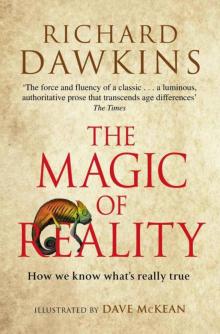 The Magic of Reality
The Magic of Reality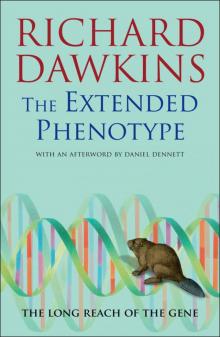 The Extended Phenotype
The Extended Phenotype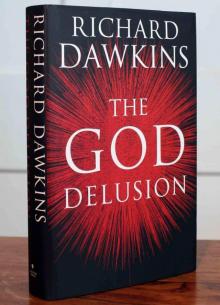 The God Delusion
The God Delusion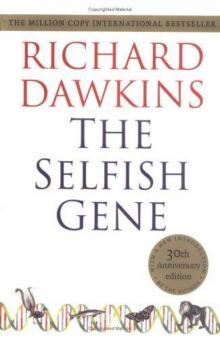 The Selfish Gene
The Selfish Gene The Blind Watchmaker
The Blind Watchmaker The Greatest Show on Earth
The Greatest Show on Earth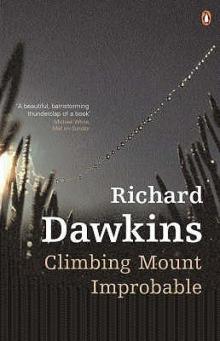 Climbing Mount Improbable
Climbing Mount Improbable Outgrowing God
Outgrowing God Brief Candle in the Dark
Brief Candle in the Dark The Greatest Show on Earth: The Evidence for Evolution
The Greatest Show on Earth: The Evidence for Evolution Science in the Soul
Science in the Soul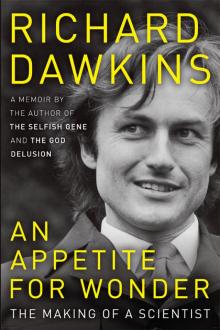 An Appetite for Wonder
An Appetite for Wonder